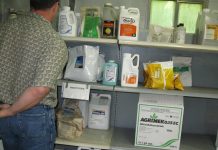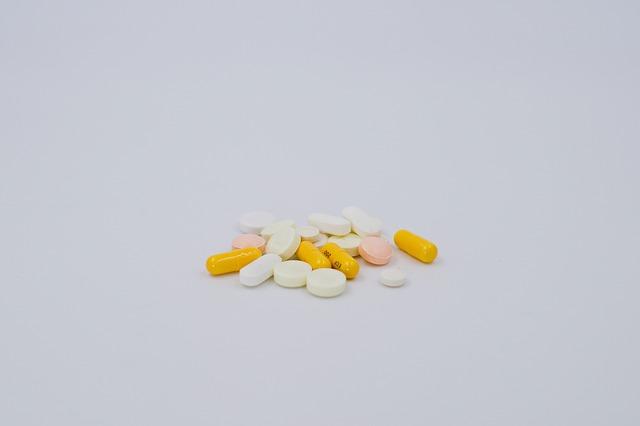In the realm of modern medicine, few discoveries have been as transformative as antibiotics. These microscopic marvels have turned once-deadly infections into manageable ailments, saving countless lives and reshaping healthcare as we know it. However, as the use of antibiotics has soared, so too have concerns about their overuse and the burgeoning threat of antibiotic resistance. This silent crisis has prompted an urgent question: Should antibiotics be restricted in medicine? This article delves into the heart of this complex issue, exploring the delicate balance between preserving these life-saving drugs for future generations and ensuring immediate patient care. Join us as we navigate the intricate web of scientific, ethical, and practical considerations that surround the potential restriction of antibiotics in modern healthcare.
Evaluating the Necessity of Antibiotics in Modern Healthcare
In the realm of modern healthcare, antibiotics have long been hailed as miraculous agents that combat bacterial infections effectively. However, their indiscriminate use has led to a global concern over antibiotic resistance, a phenomenon where bacteria evolve to resist the effects of these drugs. This raises the question: should antibiotics be more stringently restricted in medicine? Evaluating the necessity of antibiotics involves balancing their undeniable benefits against the potential risks posed by overuse. On one hand, antibiotics are indispensable in treating severe infections and preventing complications in surgeries. On the other hand, the misuse and over-prescription have fostered a public health crisis where once-treatable infections now pose significant threats.
- Advantages of Restriction:
- Reduces the risk of antibiotic-resistant bacteria.
- Encourages the development of alternative treatments.
- Enhances the effectiveness of existing antibiotics.
- Challenges:
- Immediate health risks for patients who genuinely need antibiotics.
- Potential increase in healthcare costs due to alternative treatments.
- Public misunderstanding about the necessity of antibiotics in certain cases.
As the healthcare industry grapples with these dilemmas, the emphasis must be on educating both healthcare professionals and the public about the judicious use of antibiotics. Implementing policies that promote responsible prescription practices and investing in research for new antibiotics and treatment strategies are pivotal steps towards ensuring that antibiotics remain a viable option in modern medicine without compromising future efficacy.

Understanding the Risks: Antibiotic Resistance and Its Consequences
In today’s medical landscape, the overuse and misuse of antibiotics have led to a looming crisis: antibiotic resistance. This phenomenon occurs when bacteria evolve to withstand the effects of drugs that once killed them, rendering standard treatments ineffective and infections harder to control. As a result, common medical procedures become riskier, and previously manageable illnesses may lead to severe health complications or even death.
Understanding the stakes involves recognizing several key risks associated with antibiotic resistance:
- Increased Mortality: Without effective antibiotics, minor infections can escalate, leading to higher death rates.
- Prolonged Illnesses: Resistant infections often require longer hospital stays and more intensive care.
- Economic Burden: The cost of healthcare rises due to extended treatments and the need for more expensive or experimental drugs.
- Impact on Medical Procedures: Surgeries and cancer therapies become more hazardous without effective infection control.
Antibiotic resistance is a silent, escalating threat that demands attention. Restricting antibiotic use, while controversial, could be a necessary measure to safeguard public health and preserve the efficacy of these crucial drugs for future generations.

Exploring Alternatives: Innovative Approaches to Infection Control
In the quest for innovative approaches to infection control, the exploration of antibiotic alternatives is becoming increasingly critical. With the rise of antibiotic-resistant bacteria, the medical community is urged to rethink its reliance on these drugs. Some promising alternatives include:
– Phage Therapy: Utilizes bacteriophages, viruses that specifically target and destroy bacteria, offering a precise method to combat infections without harming beneficial bacteria.
– Probiotics: Promotes the growth of beneficial bacteria in the gut, creating a natural defense against pathogenic bacteria.
– Antimicrobial Peptides: Naturally occurring molecules that have the ability to kill bacteria, fungi, and viruses, providing a broad-spectrum alternative to traditional antibiotics.
These alternatives are not only promising in their potential effectiveness but also in their ability to reduce the environmental impact associated with antibiotic overuse.
Furthermore, integrating preventative measures and holistic approaches could complement these alternatives, fostering a more sustainable model of infection control. Emphasizing the importance of hygiene practices, such as regular handwashing and vaccination, can significantly reduce the need for antibiotics. Additionally, incorporating dietary changes and stress management techniques can bolster the immune system, offering a comprehensive strategy for managing infections. By exploring these innovative approaches, the medical community can pave the way for a future where antibiotics are used more judiciously and responsibly.

Crafting Policy: Recommendations for Responsible Antibiotic Use
In the pursuit of a balanced approach to antibiotic usage, several key recommendations emerge that aim to ensure both efficacy and sustainability. Healthcare providers should be at the forefront of this effort, fostering a culture of prudent prescription practices. This involves prioritizing diagnostic testing to confirm bacterial infections before prescribing antibiotics, thereby minimizing unnecessary use. Additionally, investing in continuous professional development ensures that practitioners stay informed about the latest guidelines and resistances.
From a policy perspective, it’s essential to implement comprehensive monitoring systems that track antibiotic use and resistance patterns. These systems can provide invaluable data, enabling evidence-based policymaking. Furthermore, encouraging public education initiatives can empower patients to understand the importance of following prescriptions to completion and the risks of self-medication. By adopting these strategies, we can craft a responsible framework for antibiotic use that safeguards public health while addressing the growing threat of antibiotic resistance.
- Diagnostic Testing: Confirm infections before prescribing.
- Professional Development: Continuous education on guidelines.
- Monitoring Systems: Track usage and resistance patterns.
- Public Education: Raise awareness about responsible use.
To Wrap It Up
As we draw the curtain on this exploration of whether antibiotics should be restricted in medicine, we find ourselves standing at the crossroads of caution and necessity. On one hand, these powerful drugs have been the cornerstone of modern medicine, offering salvation from once-deadly infections. On the other, the looming specter of antibiotic resistance urges us to tread carefully, lest we render these life-saving tools impotent.
The debate is not merely a question of restriction, but rather a call for balance—a harmonious dance between innovation and stewardship. As the medical community continues to navigate this complex landscape, the responsibility also falls upon each of us to understand and respect the role antibiotics play in our lives.
The future is unwritten, but it is clear that the choices we make today will echo through the halls of tomorrow’s healthcare. Whether through policy, education, or individual action, the path forward will require a collective effort, a symphony of voices working in concert to preserve the efficacy of antibiotics for generations to come. And so, with a mindful eye on the horizon, we leave this question open, inviting continued dialogue and discovery in the pursuit of health and harmony.


































